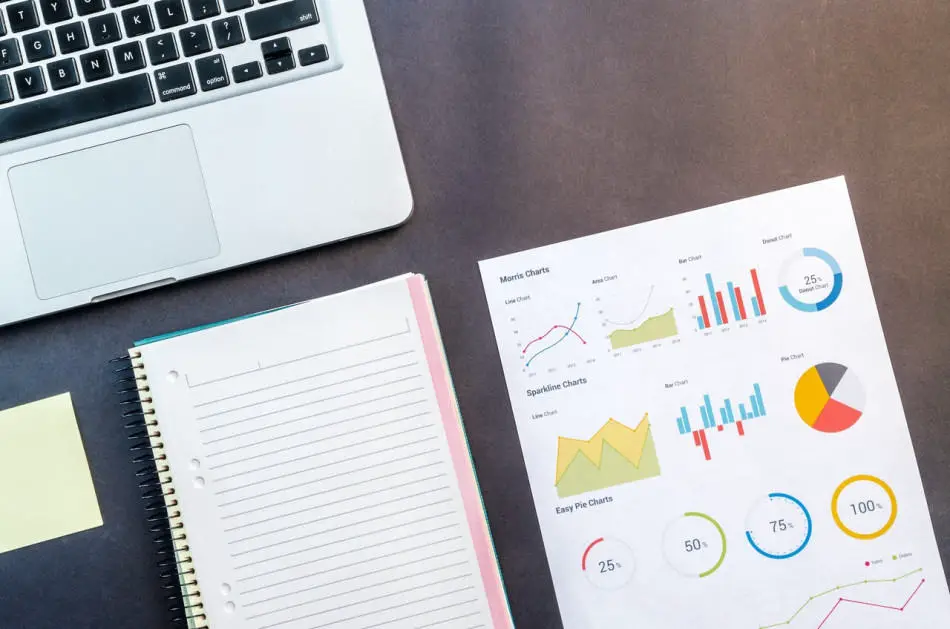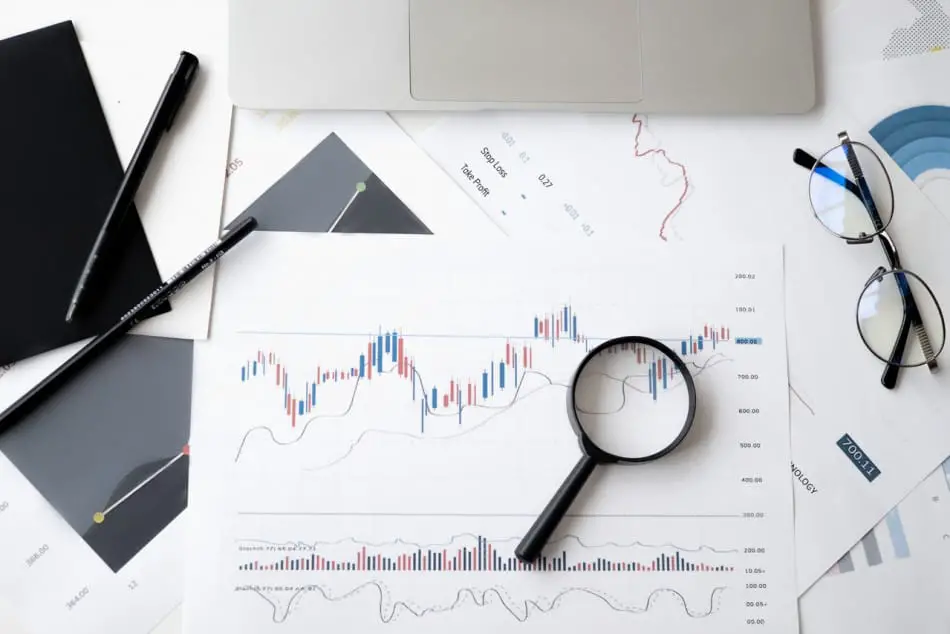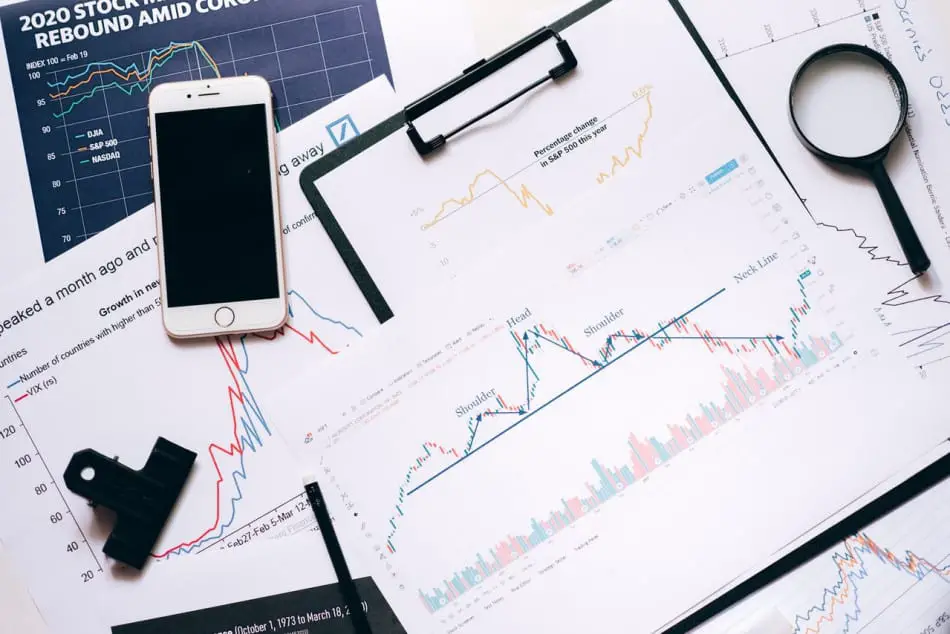“Statistics is the grammar of science.” – these words were first uttered by the great mathematician Karl Pearson, and they still ring true today.
Statistics is the foundation upon which all scientific knowledge is built. This is why, if you’re interested in learning more about science, it’s essential that you first learn statistics.
There are five important steps involved in learning statistics by yourself – learn the fundamental mathematical principles, familiarize yourself with basic statistical terms, understand the methods of statistical analysis, study previously worked examples, and practice with real data.
Saying that statistics is an easy subject to learn would be a grave underestimation. However, it’s not an impossible feat either.
Through this guide, we’ll equip you with all the tools and resources you need to self-learn statistics, as well as give you a detailed understanding of all the steps we’ve mentioned above.
So, let’s get started!
5 Steps to Self-Learn Statistics
As we mentioned earlier, there are five steps involved in self-learning statistics. Let’s take a more in-depth look at each one of these steps.
-> Read Also What Is An Autodidact?
1. Learn the Fundamental Mathematical Principles

The first step to self-learning statistics is to learn the fundamental mathematical principles that underlie the subject. These include concepts such as algebra, calculus, set theory, and probability theory.
A good understanding of these principles is essential for being able to grasp more advanced statistical concepts.
Additionally, many statistical methods extensively require the use of algebra and calculus formulas.
Although these concepts might seem daunting at first, especially if you’ve not been exposed to them before, there are many excellent resources available online that can help you learn them.
For example – Khan Academy is a great website that offers free video lessons on all of these topics. Here’s the link so that you can check it out – https://www.khanacademy.org/math.
Once you have a strong understanding of the fundamental mathematical principles, you’ll be ready to move on to step two.
2. Familiarize Yourself with Basic Statistical Terminology
The second step is to familiarize yourself with basic statistical terminology. This includes terms such as “population,” “sample,” “random variable,” “distribution,” and so forth.
Of all the statistical terms that you’ll come across during your studies, three of the most important ones are “mean”, “median”, and “mode”.
They are the three measures of central tendencies, which give you different ways of describing the ‘average’ value in a data set.
Here’s a quick overview of each one:
- Mean: The mean is simply the arithmetic average of all the values in a data set. To calculate it, you just need to add up all the values and then divide by the number of values.
- Median: The median is the value that falls in the middle of a data set. So, if you have ten values, the median would be the fifth value when they’re sorted from smallest to largest.
- Mode: The mode is the value that occurs most frequently in a data set. For e.g., if you have the following values: [15, 25, 25, 25, 50, 100], then the mode would be “25”.
A great way to learn these terms is by reading through the glossary of a statistics textbook. However, if you don’t have access to a textbook, there are many other resources that you can use.
For instance, the website Statistics.com has a wonderful glossary with an extensive list of statistical terms, along with their definitions. You can find it here – https://www.statistics.com/glossaries/.
Once you’re familiar with the basic terminology, you’ll be able to understand step three more easily.
3. Understanding the Methods of Statistical Analysis

Statistical analysis is the life and blood of the subject. It’s what allows us to draw conclusions from data and make predictions about future events.
Without it, statistics would just be a bunch of numbers and nothing more.
It is at this step that we get into the core of statistics and start learning about different methods of statistical analysis.
The three most important statistical methods used for analysis being – descriptive, inferential, and associational.
Descriptive Statistical Analysis
This method is used to describe the main features of a data set in a simple and concise way.
The most common descriptive statistics are measures of central tendency (mean, median, mode) and measures of dispersion (range, variance, standard deviation).
For example: If you want to describe the height of all the students in your class, you would take a measure of central tendency (like the mean or median) to get an idea of what the ‘average’ height is. This would give you a general idea of how tall or short the students are.
Inferential Statistical Analysis
This method is used to infer conclusions from data that can be extended beyond the immediate data set.
In simpler words, it allows us to generalize from a small group of people to a larger population.
For example: Let’s say you want to know the popularity of a new TV show. You could survey a small group of people and ask them whether they like the show or not. From the results of the survey, you can then infer that the majority of people in the population would feel the same way.
Associational Statistical Analysis
This method is used to study the relationship between two or more variables. This allows us to see if there is a cause-and-effect relationship between said variables, and to what extent they are related.
For example: Let’s say you want to study the relationship between TV watching and obesity. You could collect data on the amount of time people spend watching TV and their body mass index (BMI). From the data, you can then infer that there is a positive relationship between TV watching and obesity (i.e. the more TV people watch, the more likely they are to be obese).
Along with these three, there are other methods as well such as predictive analysis, prescriptive analysis, exploratory analysis, causal analysis, and so on.
We recommend you start out with learning descriptive analysis (as it is the easiest) and then move on to inferential analysis and then lastly, associational analysis (as this is the most advanced, and you’ll need specialized software for calculations).
4. Study Previously Worked Examples

One of the best ways to learn anything is by studying examples. And this step is no different.
When you’re just starting out, it’s best to look at statistical examples that have already been worked out. This will give you a better understanding of how the methods are used and applied in practice.
The Faculty of Mathematics at the University of Cambridge has a wonderful website dedicated to worked examples in statistics – https://nrich.maths.org/statistics.
You’ll find a wide variety of examples here, from simple high-school-level problems to more advanced university-level problems.
Depending on your level, you can start with the examples that are most appropriate for you.
Once you’ve gone through a few worked examples, you should then try to solve some problems on your own.
This will help consolidate what you’ve learned and also give you a better understanding of the methods.
5. Practice with Real Data
If you’ve diligently gone through each of the previous steps, then by now you should have a pretty good understanding of the basics of statistics.
Now it’s time to put your knowledge to the test and see how it fares in the real world. One way to do this is to find a dataset online and try to analyze it using the methods you’ve learned.
Our recommendation: StatCrunch
On this website, you can find data on literally anything! Salaries of different professions? Check.
World population by country? Check.
The number of people who own a smartphone in different countries? Check. You name it, they’ve got it.
Once you’ve found a dataset that interests you, try to apply the methods you’ve learned to it and see what conclusions you can draw.
By repeatedly doing this, you’ll soon be able to hone your skills and become a statistical analysis pro in no time!
-> Learn More about Self-Learning vs. Classroom Learning: Which Is Better?
Tips to Help You Self-Learn Statistics Faster

While these steps are certainly helpful, there are also a few things you can do to help yourself learn statistics faster.
Here are a few tips:
1. Get a good statistics textbook
There’s no point in trying to learn from a bad textbook. Not only will it be hard to understand, but you’ll also likely get confused and frustrated very quickly.
Instead, take the time to find a good statistics textbook that is well-written and easy to understand.
Our recommendations – “Statistics for Business and Economics” by Anderson et al., “Introduction to the Practice of Statistics” by Moore et al., and “Statistics” by Robert. S. Witte.
2. Apply statistics to everyday situations
One of the best ways to learn something is by using it in your everyday life. And this applies to statistics as well!
Whenever you can, try to apply statistical methods and concepts to real-life situations. For example, next time you’re at the grocery store, try to calculate the mean price of all the items in your cart.
Or, if you’re watching a basketball game on TV, try to calculate the shooting percentage of each player.
Not only will this help you better understand and remember the concepts, but it will also make learning statistics a lot more fun!
3. Find a good statistical analysis software
A lot of people are going to tell you that you should be doing all your statistical analysis by hand. And while it’s true that this is a great way to learn the concepts, it’s not always practical (or even possible) in the real world.
In today’s world, almost all statistical analysis is done using some sort of software. And if you want to be able to do the same, then you need to find a good statistical analysis software that you’re comfortable using.
Our recommendations – Microsoft Excel (for basic analysis), SPSS, and R (for more advanced analysis).
4. Get yourself a graphing calculator
Before you start to use any advanced statistical software, it’s a good idea to get yourself a graphing calculator for doing simple calculations and plotting graphs.
Not only will this make your life a lot easier, but it will also help you better understand the concepts as you’ll be able to visualize them more easily.
Our recommendations – the TI-84 Plus CE (for beginners) or the TI-Nspire CX CAS (for more advanced users).
5. Do not try to memorize formulas
One of the biggest mistakes that students make when learning statistics is trying to memorize all the formulas. Not only is this not necessary, but it’s also a waste of time as you’ll likely forget most of them anyway.
Instead, focus on understanding the concepts and how to apply them.
If you do this, then you’ll be able to figure out the formulas when you need them and you’ll also have a much better understanding of the material.
How Long Will It Take to Self-Learn Statistics?
Statistical concepts can be difficult to understand, and it will undoubtedly take some time before you’re able to master them.
Just how long it will take depends on a lot of factors, such as your prior knowledge, how much time you’re willing to dedicate, and how well you learn.
With a study regimen that consists of 3-4 hours per day of theory and 1-2 hours of practice, you should be able to self-learn the basics of statistics within two to three months. However, if you want to master the more advanced concepts (such as hypothesis testing and regression analysis), it will take longer – anywhere from six months to a year.
Remember, these time frames are not set in stone! If you’re willing to put in the extra effort, you may be able to learn statistics faster.
Perhaps even better than a 2 year college-level statistics course!
What Are the Career Options After Self-Learning Statistics?
Once you’ve mastered the basics of statistics, you’ll be surprised at just how many doors will open up for you. Take a look at the table below to find out some of the most popular career options that are available to you.
| Career | Description | Salary (per annum) |
| Actuarial analyst | Responsible for analyzing data to help insurance companies assess risk and determine premiums. | $67,000 |
| Actuary | A professional who uses their knowledge of mathematics, statistics, and finance to help companies minimize risk while also developing new risk analysis methods. | $125,000 |
| Data analyst | Develops and implements methods of collecting, organizing, and analyzing data for companies or organizations. | $69,517 |
| Data scientist | Develops and applies methods of statistical analysis to large data sets in order to extract valuable information. | $109,917 |
| Financial risk analyst | A professional who uses their knowledge of mathematics and statistics to help banks, investment firms, and insurance companies assess financial risk. | $62,545 |
| Investment analyst | Responsible for analyzing data and making recommendations to clients regarding which investments to make. | $96,222 |
| Market researcher | Conducts research on consumers and businesses in order to understand their needs and preferences. | $65,810 |
| Operational researcher | Applies methods of mathematics and statistics to arrive at optimal or near-optimal solutions to organizational problems in business, engineering, and other fields. | $86,200 |
| Statistician | Design and manage surveys and experiments, and analyze the resulting data to draw conclusions. | $96,434 |
As you can see, a career in statistics can be very rewarding, both financially and intellectually.
So all that time and effort you put into self-learning will definitely be worth it in the end!
-> Learn more about the 7 best websites for self-learning
Frequently Asked Questions (FAQs)

Let’s take a look at some of the most common questions that people have about self-learning statistics.
Q.1. I’m not very good at math. Can I still self-learn statistics?
A. Yes, you can! While a certain degree of mathematical aptitude is required for statistics, it’s nothing that can’t be learned with enough practice. We recommend starting with basic algebra and working your way up.
Q.2. What are some free online courses that I can take to learn statistics?
A. Here are some of our favorite beginner-friendly courses on statistics: Intro to Statistics – Udacity, Introduction to Statistics – Coursera, and Introduction to Bayesian Statistics- Udemy. All of these courses are completely free to take!
Q.3. What to learn next after self-learning statistics?
A. After you’ve self-learned the basics of statistics, we recommend taking a look at machine learning. It’s a field that’s growing rapidly, and having a strong understanding of statistics will give you a big advantage.
The potential applications of machine learning are endless, so it’s definitely worth your time to learn!
Final Thoughts
Phew, that was a lot of information to take in, wasn’t it? Statistics is a field that’s filled with a lot of complexities, but don’t let that discourage you from self-learning it.
It’s a ton of fun once you get the hang of it, and we promise that it’ll be worth your while in the end.
Through this guide, we hope that you now have a better understanding of what’s involved in self-learning statistics.
By following the steps we outlined, you’ll be well on your way to becoming a statistics expert in no time!
All the best!






